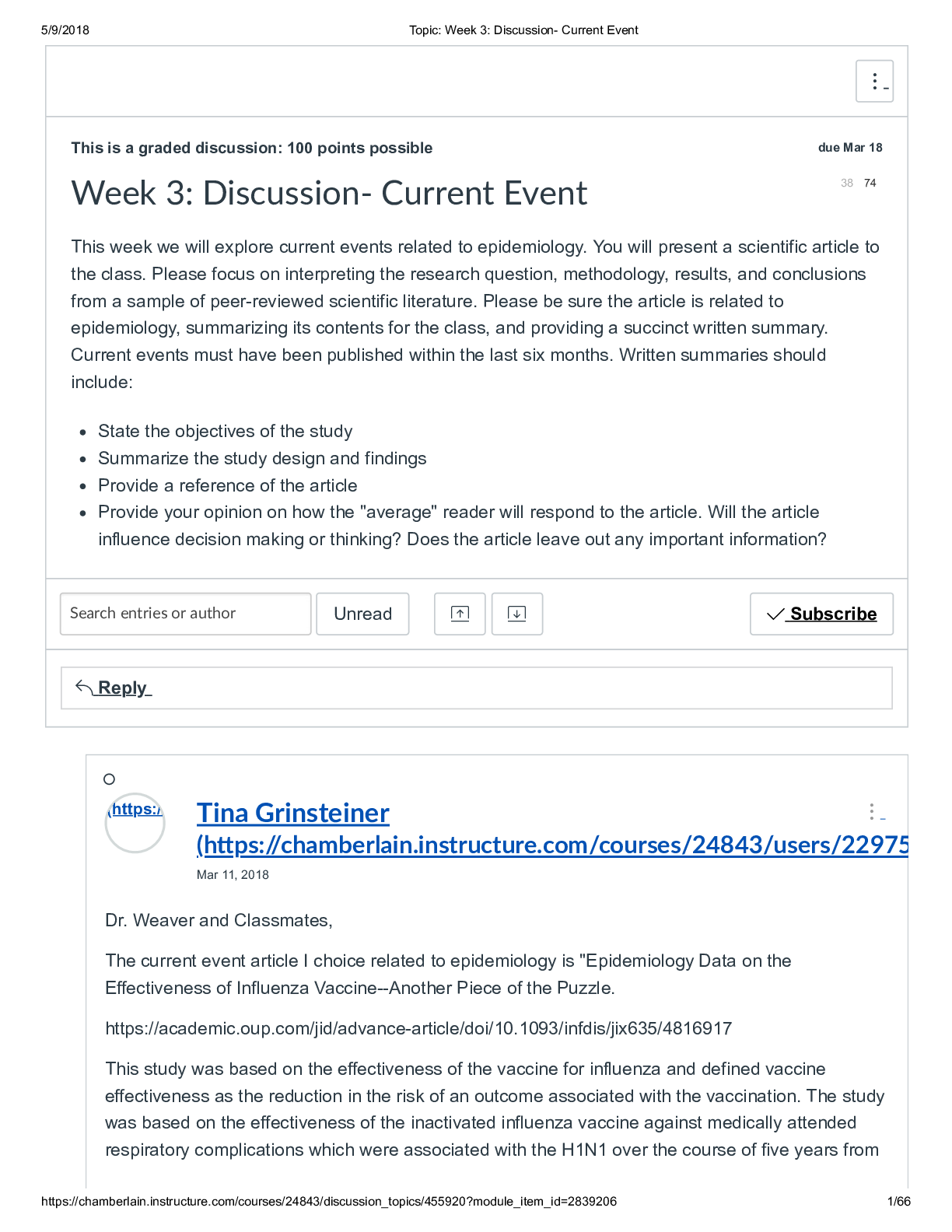*NURSING > DISCUSSION POST > NR 603 Week 6 TD1 Peer Response Chamberlain College Of Nursing:( SATISFACTION GUARANTEED, RATED A ) (All)
NR 603 Week 6 TD1 Peer Response Chamberlain College Of Nursing:( SATISFACTION GUARANTEED, RATED A )
Document Content and Description Below
Rameka and Class, I found it hard to pick between Bipolar Disorder type 1 and bipolar disorder type 2 as I felt like she had mixed symptoms. The natural course of bipolar disorder presents with depr... ession often leading to a diagnosis of major depressive disorder in the initial stages. This misdiagnosis often delays treatment and can contribute to worsening of symptoms due to antidepressant treatments (Fritz et al., 2017). Patients may present with symptoms or complaints that do not match that of bipolar disorder; therefore, the history is very important in making the diagnosis. As with depressive disorders, a person may present with vague somatic complaints during a depressive episode. Bipolar disorders can further be defined by four subtypes: bipolar I, bipolar II, cyclothymia, and bipolar disorder not otherwise specified. Bipolar I disorder involves manic or mixed episodes with or without psychosis and/or major depression. Bipolar II disorder involve hypomanic episode with major depression and no history of manic or mixed episodes. Cyclothymia involves hypomanic and depressive symptoms that do not meet criteria for bipolar II disorder with no major depressive episodes. Bipolar disorder not otherwise specified does not meet criteria for major depression, bipolar I, II, or cyclothymia (Price & Manzonni-Nissen, 2012). My top 3 differentials are listed below in order of most likely to least likely along with proposed treatment plan. Bipolar Disorder, Type I (F31.10) Bipolar disorder has two phases known as either manic or depressive. Symptoms include periods of mania, hypomania, psychosis, or depression alternating with periods of wellness. The course of bipolar disorders can vary with patients rarely experiencing a single episode. Although mania and hypomania are common symptoms of bipolar disorder, most will have ongoing depressive episodes contributing to disability (Wells & Kodner, 2017). Bipolar I disorder involves manic or mixed episodes with or without psychosis and/or major depression. Lisa is experiencing manifestations of mania; mania is described as a period of elevated irritable persistent mood associated with increased activity and energy daily and lasting for more than a week, flight of ideas, inflated self-esteem, increased goal directed activity such as working long hours at the big box store, rapid, tangential speech, irritability, and engaging in high risk behaviors (e.g. drinking and dabbling in drugs); making this diagnosis the most likely choice based on DSM-V criteria and presenting symptoms (Nile Wagley, 2017). Lisa also has a family history of mental illness in a first degree relative increasing her risk of mental disorders. Cyclothymic Disorder (F34.0) Cyclothymic disorder is a chronic milder form of bipolar disorder that is characterized by alternating cycles of depression, excitement, and euphoria that is milder than in actual manic or depressive bipolar episodes. Those affected usually are not disconnected from reality when cycling thru various stages. The rapid cycling of moods can feel like a loss of control. Extreme stress can trigger episodes and the person may feel restless and on edge. DSM-V diagnostic criteria for diagnosis include multiple periods of cyclic hypomania or dysthymia for at least 2 years without a symptom free period for more than 2 months, with no major depressive episodes, mania, or mixed episodes. Symptoms cannot be related to other This study source was downloaded by 100000831988016 from CourseHero.com on 04-18-2022 07:47:54 GMT -05:00 https://www.coursehero.com/file/34130870/NR-603-Week-6-TD1-Peer-Responsedocx/ medical causes, mental disorders, or substance abuse and cause impairment of personal or professional life (Parks-Chapman & Oji, 2017). Lisa exhibits impulsivity, increased energy, weight loss, abnormal behavior, and substance abuse. While she is not suicidal, does not report loss of pleasure in activities, or socially withdrawn cyclothymic disorder can not be excluded as a diagnosis (Parks-Chapman & Oji, 2017). Schizoaffective Disorder, bipolar type (F25.0) Schizoaffective disorder is classified as cycles of severe symptoms are often followed by periods of improvement. Symptoms may include delusions, hallucinations, depressed episodes, and manic periods of high energy. The bipolar type includes extreme "highs" and "lows" known as mania and depression. Hallucinations and delusions without mood changes are features of psychotic disorders which Lisa does not have; she does present with mood disorders making a diagnosis of psychosis not likely. While she does exhibit symptoms of bipolar disorder like lack of sleep, decreased appetite, substance abuse, irritability, elevated energy and mood she has no psychotic symptoms. Difficulty functioning at work, school, or in social settings are often associated with this disorder; Lisa does have some difficulty functioning with her sister due to her behavior. Schizoaffective disorder has a wide range of signs and symptoms that make it challenging to diagnose due to its overlap with other disorders (Nile Wagley, 2017). Although Lisa has some symptoms of schizoaffective disorder she does not specifically have any symptoms of psychosis making this diagnosis least likely (2018). I would question the patient and family about previous history of depression diagnosis, hospitalizations, or if she has ever been prescribed medications for depression or mood disorders. I also would want to explore childhood issues or traumatic events that may have triggered the events, also I would like to discuss with the patient her feelings about having an abortion and possibly see if that was the trigger which contributed to her current episode. Diagnostics Diagnostic criteria are based on symptoms and ruling out medical causes or other disorders. The Mood Disorders Questionnaire is a good diagnostic tool to use. It is a self-reported questionnaire that asks 15 questions that assess for symptoms of mania, hypomania, and functional impairment (Covino & Hoffman, 2017). Seven symptoms occurring at the same time causing moderate to serious dysfunction of daily life indicates a positive score. Lisa’s PHQ score was 5 which indicates major depressive disorder, given her score and unpredictable behavior I would recommend an inpatient treatment for Lisa at this time to get her stabilized and started on medication in a controlled environment (Nile Wagley, 2017). Before starting any medications, I would get a pregnancy test to rule out pregnancy as a cause of mood changes. I would also get a CMP for baseline kidney and liver functions as antipsychotic medications can affect both (Nile Wagley, 2017). Baseline Calcium levels should be measured before starting lithium as well. RX Lithium 600 mg tablet Sig: 1 tablet PO TID Disp: 180 tablets Refill: 1 This study source was downloaded by 100000831988016 from CourseHero.com on 04-18-2022 07:47:54 GMT -05:00 https://www.coursehero.com/file/34130870/NR-603-Week-6-TD1-Peer-Responsedocx/ Max dose rate of 2400mg/day with dose adjustments q4-7 days based on treatment response and serum lithium levels (Epocrates, 2016). Therapeutic levels in acute mania are 0.8-1.2mEq/L with levels >1.5 mEq/L considered toxic. It takes about 3-7 days for medication to reach a steady serum state, therefore lithium levels should be measured frequently (2x/week) upon initiation until levels are stabilized. Symptoms should start to improve in 1 week with progressive improvement over the next 3 weeks. Education Lithium is a mood stabilizer used to treat manic episodes of depression. Mania includes hyperactivity, rapid speech, poor judgment, reduced need for sleep, aggression, and anger. It helps to decrease the intensity of manic episodes. Lithium affects the flow of sodium through nerve and muscle cells in the body which affects excitation. I would advise Lisa that it may take up to a month before she sees a dramatic improvement in symptoms, but she should not stop using this medication without first consulting her doctor (Epocrates, 2016). Common side effects of lithium include nausea, dry mouth, metallic taste, diarrhea, and GI upset. More severe symptoms of toxicity include loss of balance, vomiting, weakness, ataxia, blurred vision, tremor, irritability, muscle twitching, agitation, tinni [Show More]
Last updated: 2 years ago
Preview 1 out of 4 pages

Buy this document to get the full access instantly
Instant Download Access after purchase
Buy NowInstant download
We Accept:

Reviews( 0 )
$11.00
Can't find what you want? Try our AI powered Search
Document information
Connected school, study & course
About the document
Uploaded On
Apr 18, 2022
Number of pages
4
Written in
Additional information
This document has been written for:
Uploaded
Apr 18, 2022
Downloads
0
Views
125

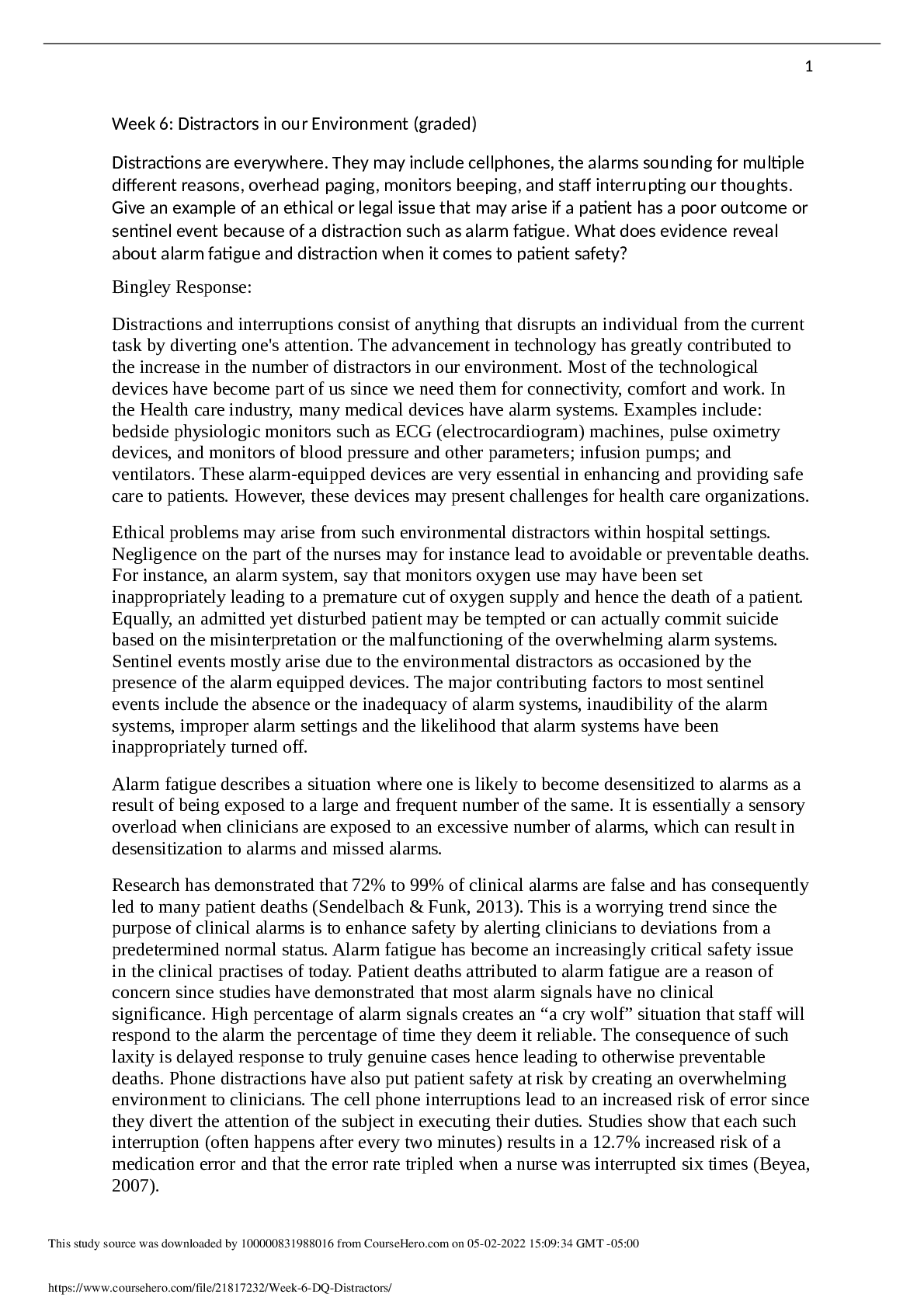
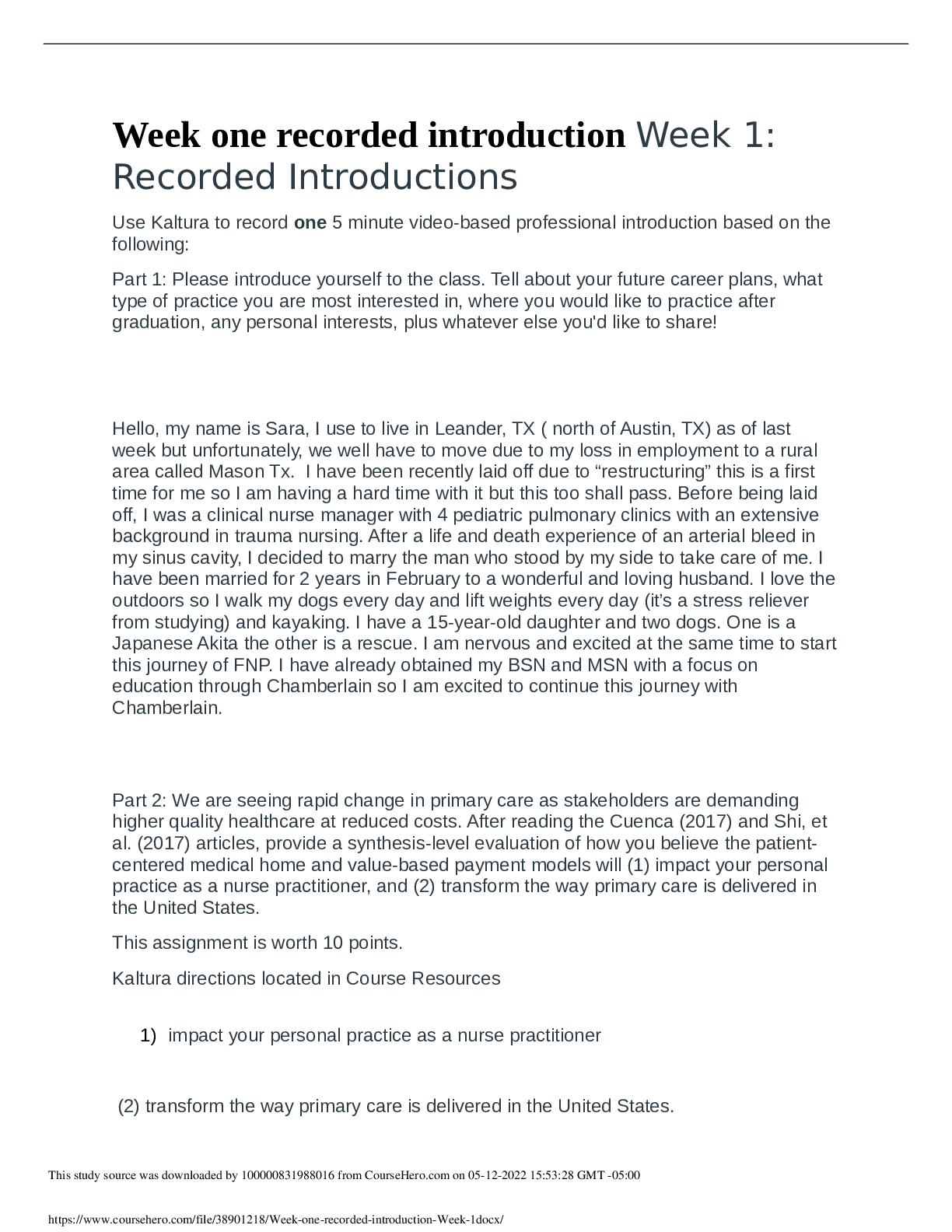


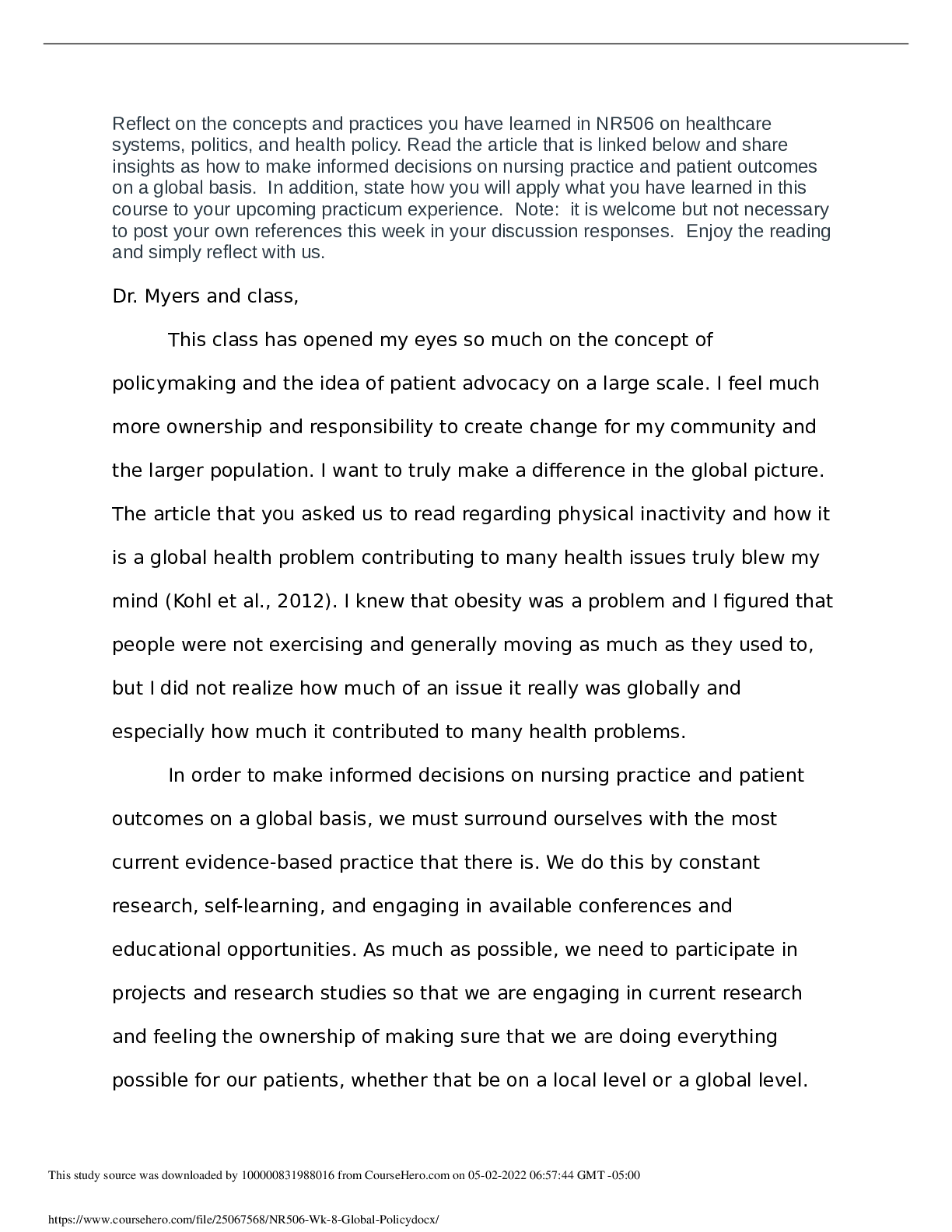
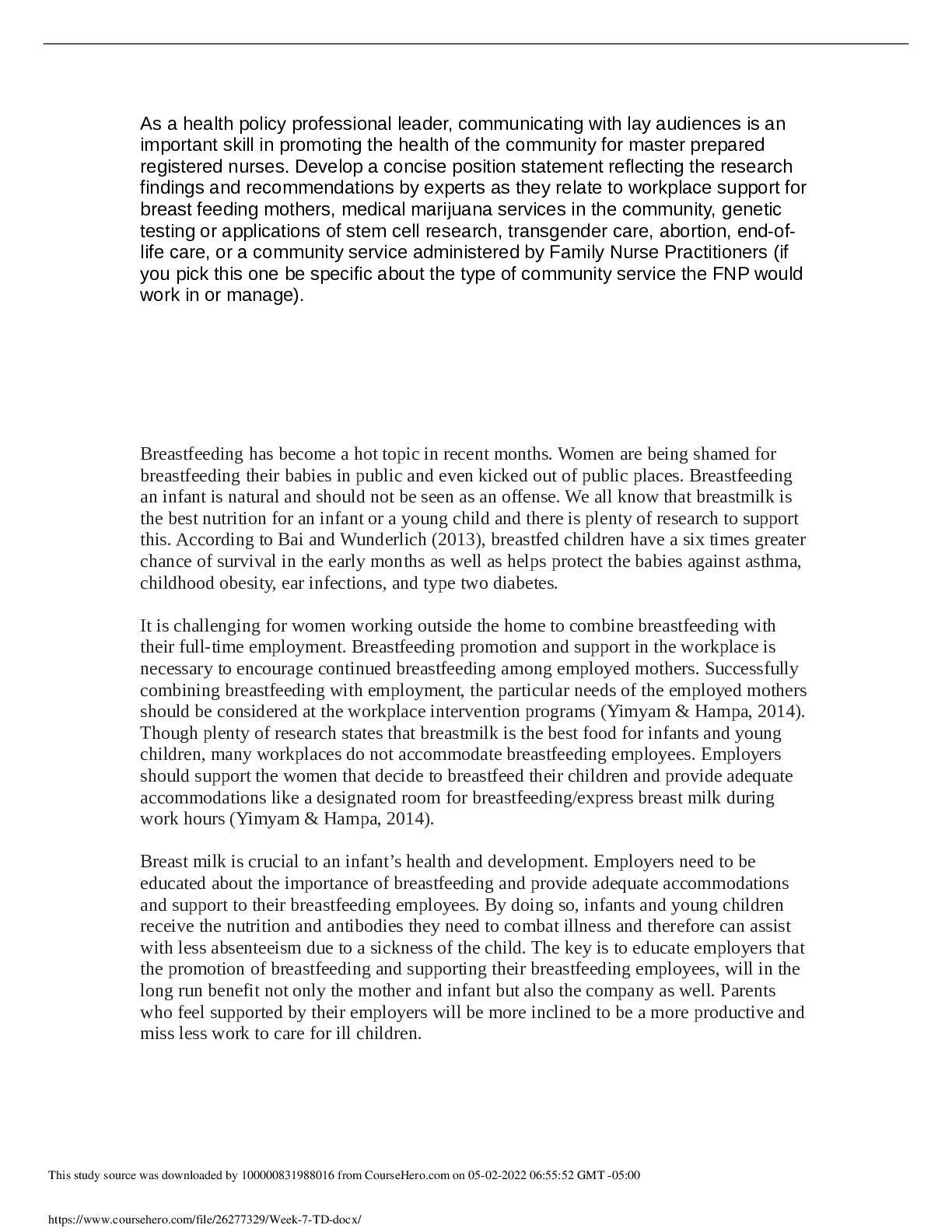
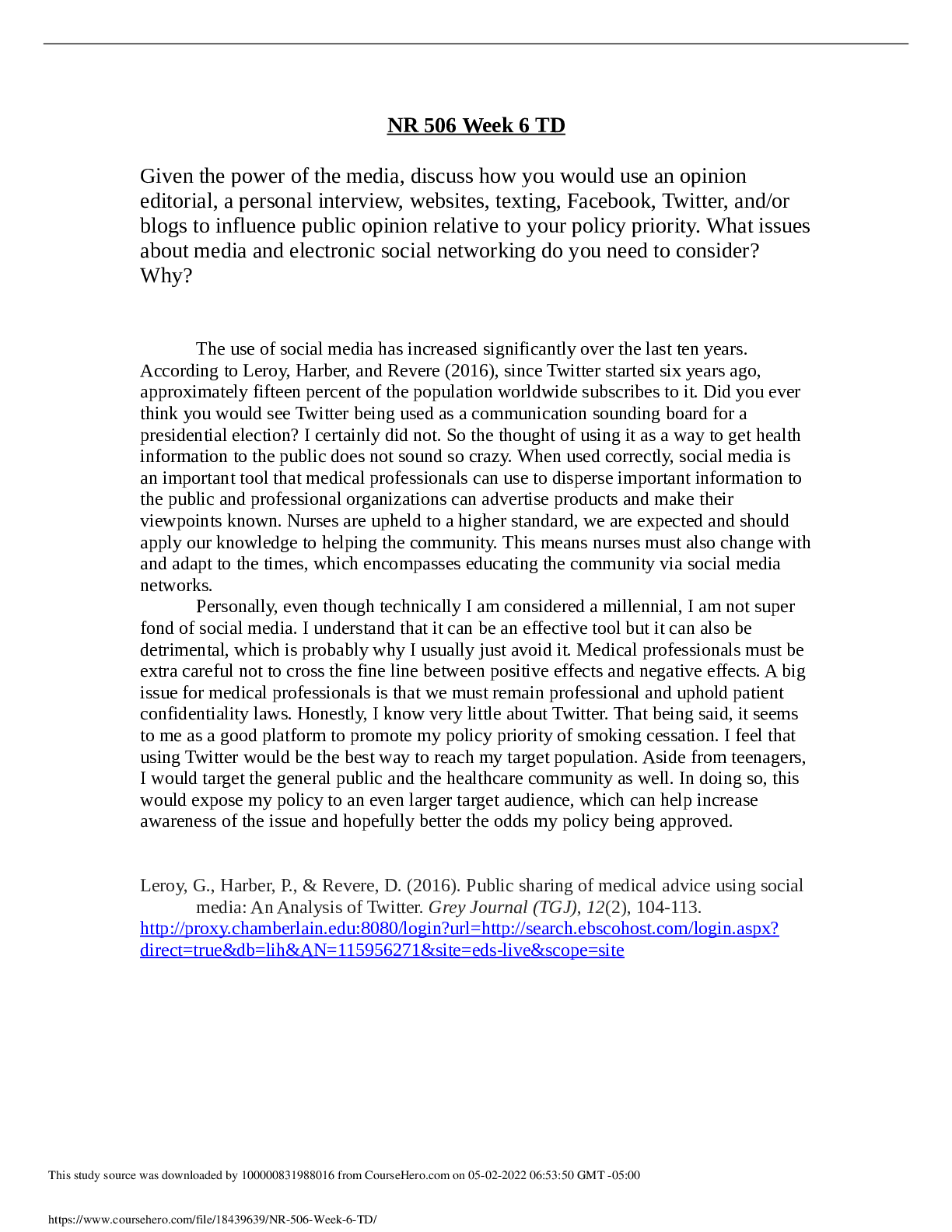
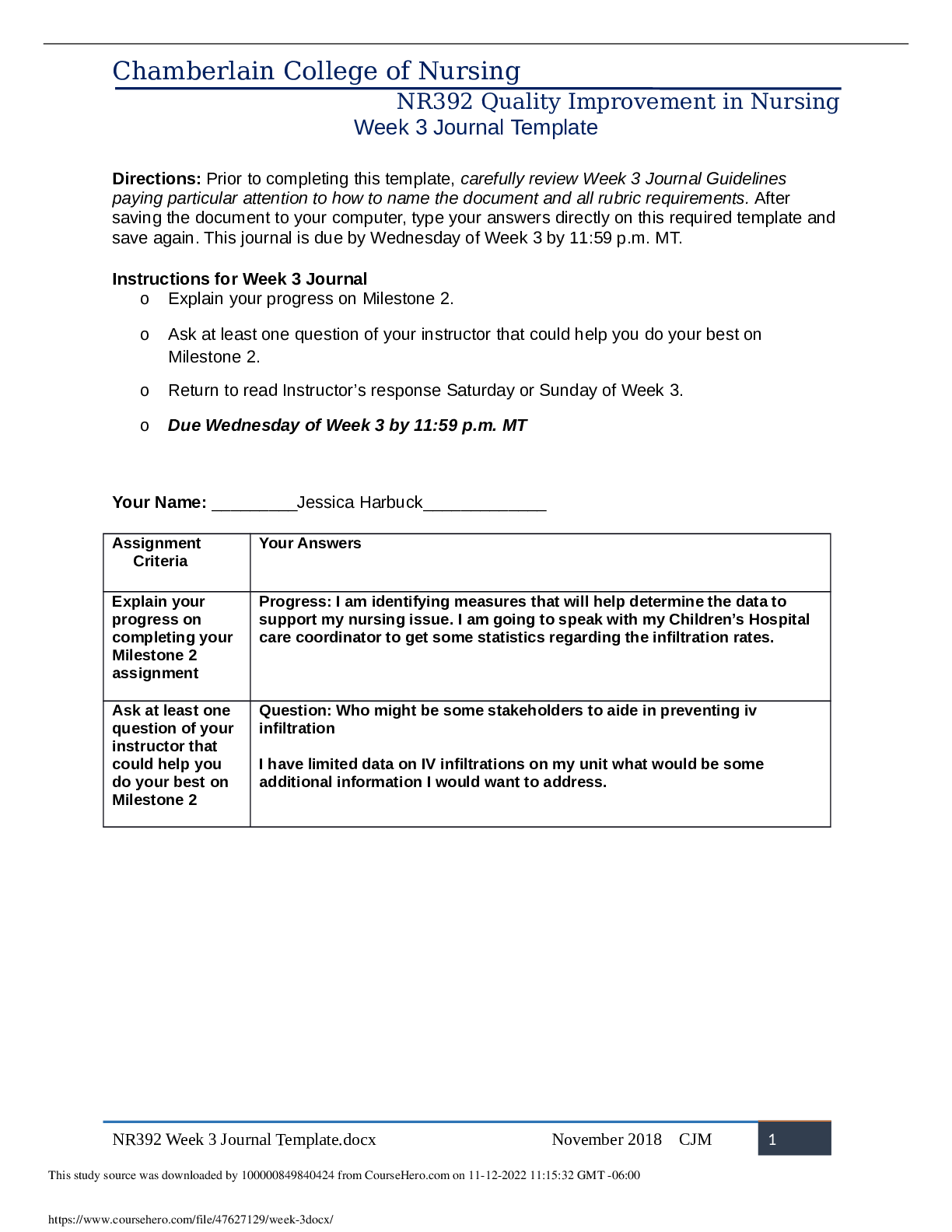
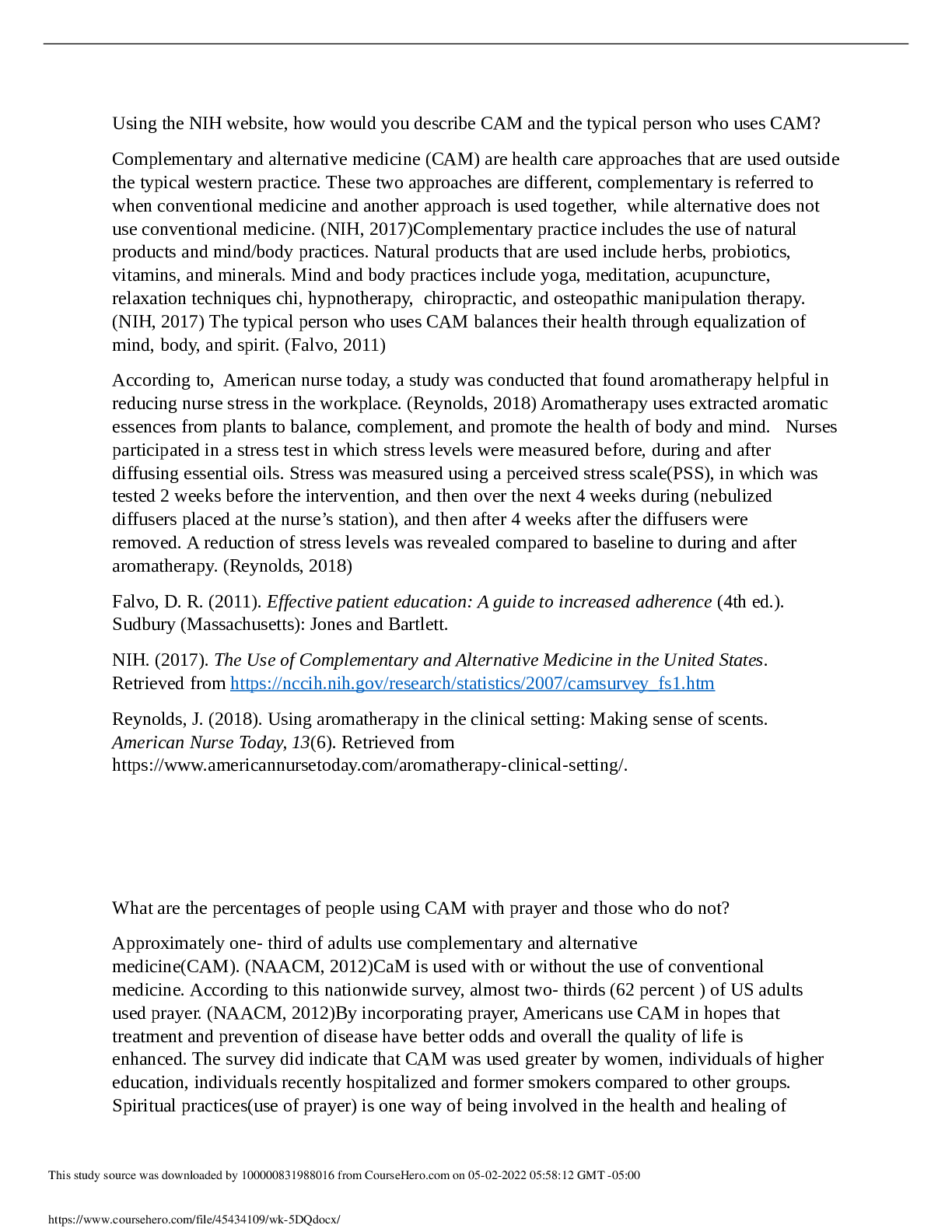
.png)

